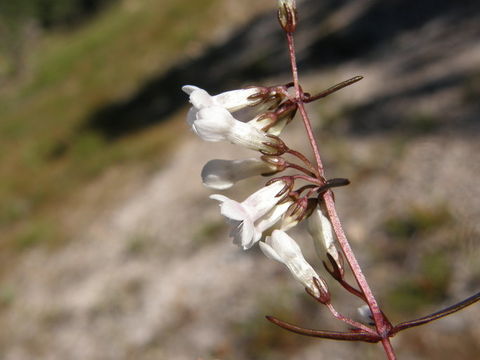Gentianella
|
Family: Gentianaceae |
PLANTS: Annual, biennial or perennial herbs. STEMS: terete or rectangular and winged. LEAVES: sessile and somewhat clasping or petioled, often forming a basal rosette. FLOWERS: 4- or 5-merous, solitary or in cymes; calyx lobes equal, unequal or reduced to teeth; corolla funnelform, cylindric or rotate, with or without an internal fringe (corona) at the base of the corolla lobes, the coronal hairs separate or united and forming a coronal scale; pistil stipitate or sessile, fusiform or cylindric. FRUIT: a capsule usually slightly exceeding the marcescent corolla. SEEDS: smooth to papillose, globose to slightly flattened. NOTES: A large genus with over 200 spp.; world-wide except Africa. (Gentiana + Latin diminutive suffix ella = little gentian). REFERENCES: Mason, Charles T. 1998 Gentianaceae. J. Ariz. - Nev. Acad. Sci. 30(2): 84. Fls 4-5-merous; cal without an internal membrane; cal-lobes wholly green; cor marcescent, tubular to funnelform or campanulate, without folds or plaits in the sinuses but sometimes with fimbriate scales at the orifice, and regularly with nectary- glands alternating with the stamens toward the base within; ovary sessile or short-stipitate, the stigmas sessile or on a short, indistinct style; ovules in two rows or bands along the sutures of the ovary; seeds numerous, smooth; glabrous herbs, ours taprooted annuals or biennials with sessile or short-pedicellate fls in thyrsoid to umbelliform cymes. 100, widespread. Gleason, Henry A. & Cronquist, Arthur J. 1991. Manual of vascular plants of northeastern United States and adjacent Canada. lxxv + 910 pp. ©The New York Botanical Garden. All rights reserved. Used by permission. |

